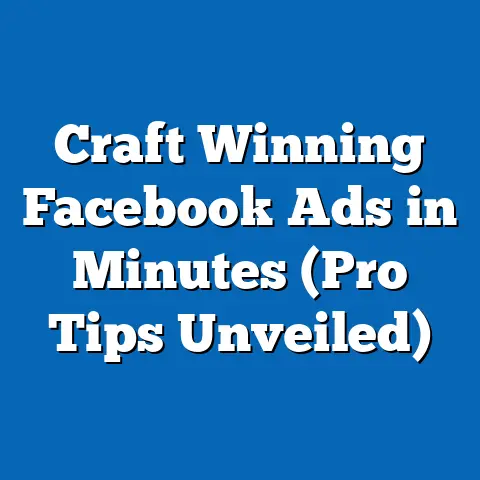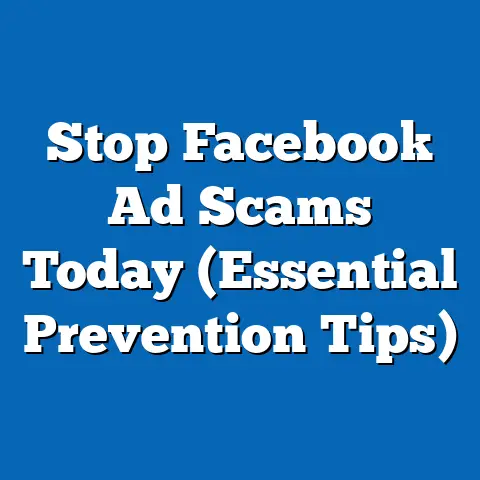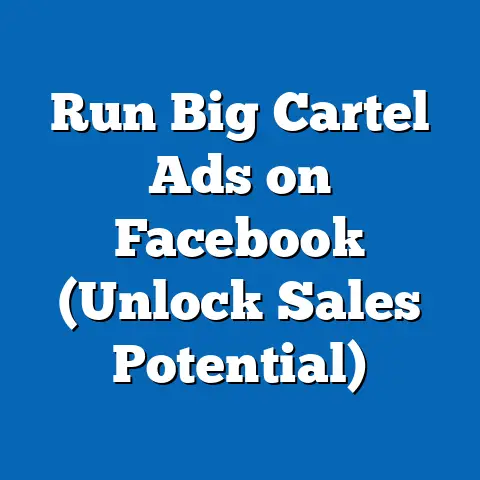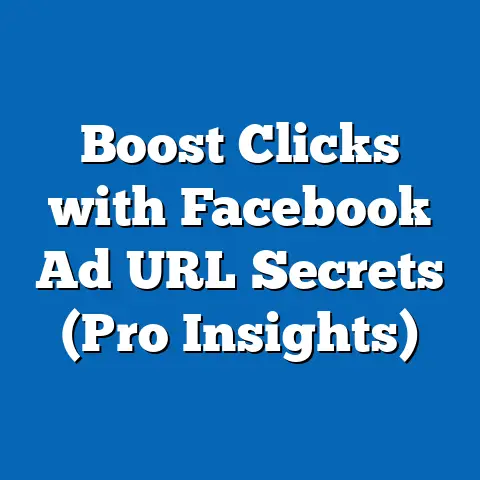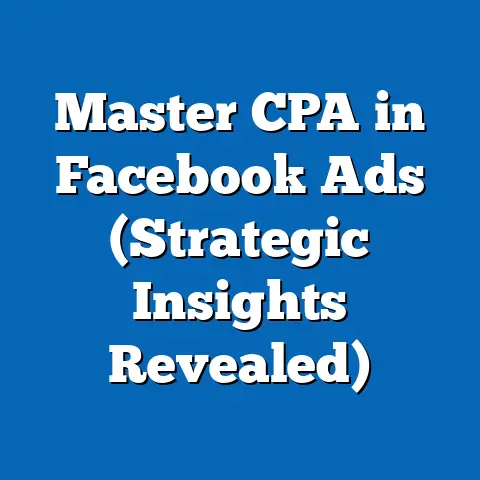Crafting Irresistible Facebook Wedding Ads (Capture Hearts)
I remember when I first started helping a local florist with their Facebook ads. They were convinced it was a waste of time and money, comparing themselves to national chains with seemingly unlimited resources. But we crafted a targeted campaign, focusing on the emotional connection flowers bring to a wedding, and within weeks, they were booking consultations left and right.
According to recent statistics, over 60% of engaged couples use social media, particularly Facebook and Instagram, for wedding inspiration and vendor discovery. This presents a massive opportunity for businesses of all sizes to connect with their ideal clients. The key lies in understanding how to craft ads that not only grab attention but also evoke the emotions associated with this once-in-a-lifetime event.
Section 1: Understanding Your Audience
Before diving into ad creation, it’s crucial to understand the demographic landscape of couples planning their weddings. This isn’t just about knowing their age and location; it’s about understanding their aspirations, anxieties, and the entire emotional journey they’re embarking on.
Key Demographic Segments:
- Age: While the average age of first-time brides is around 28, you’ll find couples ranging from their early 20s to their late 30s (and beyond!). Each age group has different priorities and spending habits. For example, younger couples might be more budget-conscious and drawn to DIY trends, while older couples may prioritize luxury and convenience.
- Interests: Facebook’s targeting capabilities allow you to pinpoint interests related to weddings, honeymoons, fashion, and more. Think beyond the obvious “wedding planning” interest. Consider targeting couples interested in specific wedding styles (e.g., bohemian, rustic, modern), honeymoon destinations (e.g., tropical islands, European cities), or even related hobbies (e.g., photography, cooking, travel).
- Relationship Status: Obvious, right? But consider using Facebook’s “Newly Engaged” life event targeting. This is a goldmine! You’re reaching people right when they’re actively seeking vendors and inspiration.
- Location: Target couples within a specific radius of your business. This is especially important for local vendors like photographers, venues, and caterers.
The Emotional Journey:
Planning a wedding is an emotional rollercoaster. Couples experience a mix of excitement, joy, stress, and anxiety. Understanding these emotions is key to crafting ads that resonate.
- Excitement: Capture the anticipation of the big day. Use imagery and copy that evokes feelings of joy and celebration.
- Anxiety: Address common concerns like budget constraints, vendor selection, and planning logistics. Offer solutions and reassurance.
- Aspiration: Tap into their dreams for the perfect wedding. Showcase aspirational imagery and highlight the unique experiences you can provide.
Case Study: The Luxury Venue
I worked with a luxury wedding venue that was struggling to attract high-end clients. Their initial ads focused on the venue’s beautiful architecture, but they weren’t getting the desired results. We realized that their target audience wasn’t just looking for a pretty space; they were looking for an unforgettable experience.
We revamped their ads to showcase real weddings that had taken place at the venue, highlighting the unique details, personalized touches, and the overall atmosphere of luxury and sophistication. We also targeted couples interested in high-end travel, fine dining, and luxury brands. The result? A significant increase in inquiries from their ideal clients.
Takeaway: Understanding your audience’s demographics and emotional needs is the foundation of effective wedding advertising. Don’t just sell a product or service; sell an experience.
Section 2: The Power of Emotion in Wedding Ads
Weddings are, at their core, emotional events. They’re about love, commitment, family, and the start of a new chapter. As advertisers, we need to tap into those emotions to create ads that truly resonate.
Emotional Marketing Explained:
Emotional marketing is the practice of using emotions to connect with your audience. It’s about creating ads that evoke feelings, tell stories, and build relationships. In the wedding industry, emotional marketing is particularly effective because weddings are inherently emotional events.
Common Emotional Triggers:
- Love: The most obvious emotion! Showcase couples in love, intimate moments, and expressions of affection.
- Joy: Capture the happiness and excitement of the wedding day. Use imagery and copy that evoke feelings of celebration and merriment.
- Nostalgia: Tap into the sentimental value of weddings. Use imagery and copy that evokes feelings of tradition, family, and memories.
- Aspiration: Showcase the dream wedding. Use aspirational imagery and highlight the unique experiences you can provide.
- Fear of Missing Out (FOMO): Create a sense of urgency and exclusivity. Highlight limited-time offers, exclusive services, or unique experiences that couples won’t want to miss.
Example Campaigns:
- The Photographer’s Story: A wedding photographer shares a personal story about capturing a couple’s special day. The story highlights the emotional connection between the photographer and the couple, and how the photographer was able to capture the essence of their love.
- The Venue’s Promise: A wedding venue promises to create an unforgettable experience for every couple. The ad showcases stunning imagery of past weddings and highlights the venue’s commitment to personalized service.
- The Planner’s Solution: A wedding planner addresses common anxieties about planning a wedding. The ad offers solutions and reassurance, highlighting the planner’s expertise and commitment to stress-free planning.
My Experience:
I once ran a campaign for a wedding cake designer that focused on the nostalgia of family recipes. We asked couples to share stories about their favorite family desserts and then created ads showcasing cakes inspired by those recipes. The response was incredible! Couples loved the idea of incorporating a personal touch into their wedding cake, and the campaign generated a ton of leads.
Takeaway: Emotion is the key to unlocking the hearts of potential clients. Don’t be afraid to be vulnerable, authentic, and relatable in your ads.
Section 3: Crafting Compelling Visuals
In the visually-driven world of Facebook, your ad’s visuals are often the first thing that catches someone’s eye. In the wedding niche, this is even more crucial, as couples are actively seeking inspiration and visual confirmation that you can bring their vision to life.
Image & Video Best Practices:
- High-Quality Images: This is non-negotiable. Use professional-quality photos that are well-lit, in focus, and visually appealing. Avoid blurry, pixelated, or poorly composed images.
- Candid Moments: While posed photos are nice, candid moments often capture the true emotion and joy of a wedding. Showcase genuine laughter, tears of happiness, and intimate moments between the couple.
- Stunning Venues: If you’re a venue, showcase your space in its best light. Highlight unique features, beautiful landscaping, and the overall ambiance.
- Creative Details: Focus on the details that make a wedding special, such as floral arrangements, table settings, cake designs, and personalized touches.
- Diverse Representation: Ensure your visuals represent a diverse range of couples and wedding styles. This will help you connect with a wider audience.
- Video Ads: Video is incredibly engaging. Create short, visually stunning videos that showcase your services, testimonials, or behind-the-scenes footage.
Ad Formats:
- Single Image Ads: Simple and effective. Use a single, high-quality image that captures the essence of your brand.
- Video Ads: Highly engaging and versatile. Use short videos to showcase your services, testimonials, or behind-the-scenes footage.
- Carousel Ads: Great for showcasing multiple products or services. Use carousel ads to highlight different aspects of your business, such as different wedding styles, venue spaces, or cake designs.
- Collection Ads: Ideal for e-commerce businesses. Use collection ads to showcase a curated selection of products related to weddings, such as dresses, accessories, or decorations.
Example: The Wedding Dress Boutique
A wedding dress boutique used carousel ads to showcase a variety of dresses in different styles and price ranges. Each dress was featured with a high-quality photo and a brief description. The ads were targeted to newly engaged women in the local area. The result? A significant increase in website traffic and appointment bookings.
Takeaway: Your visuals are your first impression. Invest in high-quality images and videos that capture the essence of your brand and showcase your expertise.
Section 4: Writing Engaging Copy
While visuals grab attention, your ad copy is what seals the deal. It’s your opportunity to connect with potential clients on an emotional level, highlight the value you offer, and inspire them to take action.
Key Elements of Effective Ad Copy:
- Strong Hook: Start with a compelling hook that grabs attention and speaks directly to your target audience. Ask a question, make a bold statement, or highlight a common pain point.
- Emotional Appeal: Tap into the emotions associated with weddings. Use words and phrases that evoke feelings of love, joy, nostalgia, and aspiration.
- Clear Call to Action: Tell people exactly what you want them to do. Use strong action verbs like “Book a Consultation,” “Get a Quote,” or “Learn More.”
- Benefits-Driven: Focus on the benefits of your product or service, not just the features. Explain how you can help couples create their dream wedding.
- Social Proof: Include testimonials, reviews, or social media mentions to build trust and credibility.
- Keep it Concise: People scroll quickly on Facebook. Keep your ad copy concise and easy to read.
Phrases That Resonate:
- “Your dream wedding starts here.”
- “Creating memories that last a lifetime.”
- “Let us take the stress out of planning your special day.”
- “Personalized service for your unforgettable celebration.”
- “Capturing the magic of your love story.”
The Power of Storytelling:
Storytelling is a powerful tool for building trust and relatability. Share personal stories about your business, your clients, or your own wedding experiences.
Example: The Wedding Planner’s Ad
A wedding planner shared a story about helping a couple overcome a last-minute crisis on their wedding day. The story highlighted the planner’s problem-solving skills, attention to detail, and commitment to ensuring a stress-free experience for the couple. The ad copy ended with a call to action: “Let us handle the details so you can enjoy your special day. Book a free consultation today!”
Takeaway: Your ad copy should be clear, concise, and emotionally resonant. Use storytelling to build trust and relatability, and always include a clear call to action.
Section 5: Targeting and Retargeting Strategies
Facebook’s targeting capabilities are incredibly powerful, allowing you to reach specific audiences based on demographics, interests, behaviors, and more. In the wedding niche, strategic targeting is essential for maximizing your ad spend and reaching the right couples.
Targeting Options:
- Demographic Targeting: Target couples based on age, gender, location, education, and relationship status. Use the “Newly Engaged” life event targeting option.
- Interest-Based Targeting: Target couples based on their interests, such as wedding planning, honeymoon destinations, fashion, and related hobbies.
- Behavioral Targeting: Target couples based on their online behavior, such as their purchase history, website visits, and app usage.
- Custom Audiences: Create custom audiences based on your existing customer list, website visitors, or social media followers.
- Lookalike Audiences: Create lookalike audiences based on your custom audiences. Facebook will find people who are similar to your existing customers.
Retargeting Strategies:
Retargeting is the practice of re-engaging users who have interacted with your brand previously. This is a highly effective strategy for increasing conversions and driving sales.
- Website Retargeting: Retarget users who have visited your website but haven’t taken a specific action, such as booking a consultation or requesting a quote.
- Engagement Retargeting: Retarget users who have engaged with your Facebook or Instagram posts, such as liking, commenting, or sharing.
- Video View Retargeting: Retarget users who have watched a certain percentage of your video ads.
Example: The Caterer’s Campaign
A caterer ran a campaign that targeted newly engaged couples in their local area who were interested in wedding planning and fine dining. They also created a custom audience of people who had visited their website. The caterer then retargeted these users with ads showcasing their wedding menus and highlighting their commitment to personalized service. The result? A significant increase in inquiries and bookings.
Takeaway: Strategic targeting and retargeting are essential for maximizing your ad spend and reaching the right couples. Use Facebook’s powerful targeting options to pinpoint your ideal audience, and re-engage users who have interacted with your brand previously.
Section 6: Analyzing and Optimizing Your Ads
Creating effective Facebook ads is an ongoing process of analysis and optimization. It’s not enough to simply set up your ads and let them run; you need to continually monitor their performance and make adjustments as needed.
Key Performance Indicators (KPIs):
- Click-Through Rate (CTR): The percentage of people who click on your ad after seeing it. A high CTR indicates that your ad is relevant and engaging.
- Engagement Rate: The percentage of people who interact with your ad, such as liking, commenting, or sharing. A high engagement rate indicates that your ad is resonating with your audience.
- Conversion Rate: The percentage of people who take a desired action after clicking on your ad, such as booking a consultation or requesting a quote. A high conversion rate indicates that your ad is effective at driving results.
- Cost Per Click (CPC): The amount you pay each time someone clicks on your ad. A low CPC indicates that your ad is efficient at driving traffic to your website.
- Cost Per Acquisition (CPA): The amount you pay each time someone takes a desired action after clicking on your ad. A low CPA indicates that your ad is efficient at driving results.
A/B Testing:
A/B testing is the process of comparing two versions of an ad to see which one performs better. This is a valuable tool for refining your visuals, copy, and targeting strategies.
- Test Different Visuals: Experiment with different images and videos to see which ones resonate best with your audience.
- Test Different Copy: Try different headlines, body copy, and calls to action to see which ones drive the most clicks and conversions.
- Test Different Targeting: Experiment with different targeting options to see which ones reach the most relevant audience.
My Optimization Story:
I remember working with a wedding photographer who was frustrated with their ad performance. Their ads were getting a lot of clicks, but they weren’t generating any leads. We analyzed their ad copy and realized that it was too generic. We revamped their ads to highlight their unique style and their commitment to capturing candid moments. We also added a clear call to action: “Book a free consultation today!” The result? A significant increase in leads and bookings.
Takeaway: Analyzing your ad performance and continually optimizing your campaigns is essential for maximizing your ROI. Track your KPIs, conduct A/B tests, and be willing to make adjustments as needed.
Section 7: Inspiring Case Studies
Let’s look at some real-world examples of wedding vendors who have successfully crafted irresistible Facebook ads.
- The Floral Designer: Used video ads to showcase their stunning floral arrangements and highlight their commitment to personalized service. They targeted newly engaged couples in their local area who were interested in wedding planning and floral design. The result? A significant increase in inquiries and bookings.
- The DJ: Used carousel ads to showcase their different DJ packages and highlight their experience and expertise. They targeted couples interested in specific music genres and wedding styles. The result? A significant increase in website traffic and bookings.
- The Bridal Shop: Ran a contest on Facebook, offering a free wedding dress to one lucky winner. They targeted newly engaged women in their local area who were interested in wedding dresses and bridal fashion. The result? A massive increase in social media followers and website traffic.
Conclusion: Capturing Hearts Through Creativity
Crafting irresistible Facebook wedding ads requires a blend of creativity, emotion, and strategic thinking. It’s about understanding your audience, tapping into their emotions, and showcasing your unique value proposition. Don’t be afraid to experiment, test new ideas, and continually optimize your campaigns.
Remember, weddings are deeply personal experiences filled with love, joy, and anticipation. By connecting with couples on an emotional level and offering solutions to their needs, you can capture their hearts and create lasting memories.
So, embrace your unique brand identity, use the insights shared in this guide, and start creating your own irresistible ads that capture hearts and make dreams come true. Now go out there and make some magic happen!

